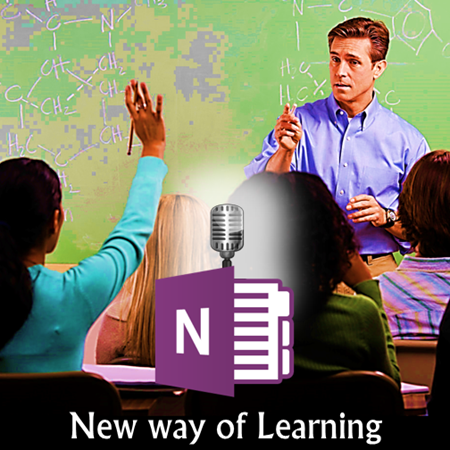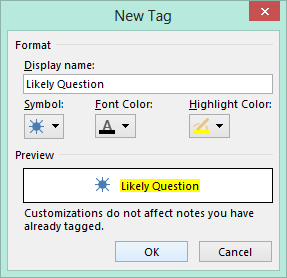In the previous article, we saw how audio recording in OneNote synchronizes automatically with your notes.
This feature can revolutionize how students attend lectures and take notes.
Read on to find out how you can benefit from learning with OneNote as your enabler.

Estimated reading time 4 min.
Contents
Recap
Read this article first: Never miss important points during a meeting. Use OneNote audio recording.
This article shows you how to record audio or video using OneNote. This article focused on the practical usage scenario of attending meetings.
Now we will see how students can benefit from this feature.
The scenario is different here. There is ONE person speaking – the professor. There may be some visuals on the black board – or some physical items shown during the lecture.
Students just listen and take notes. There may be a Q&A as well.
OneNote is free. Get it NOW.
It is free on all platforms including PC, Android, iOS, Mac and Amazon Fire.
Click on the image below to get it.
Find and sync your Personal (Web) Notebook
As a student you will need to have access to the OneNote notebooks on all your devices. Therefore you need a central place to store your notebooks. The best place is OneDrive. Login to www.onedrive.live.com using your Microsoft ID (Hotmail, MSN, Outlook, Live) and you get free 7 GB of space. DO NOT create a notebook immediately.
There is already a notebook available there. When you login to OneDrive, open this dropdown
and then choose OneNote from this menu.
It will show a notebook called Personal (Web). This is a very important notebook. You can send stuff to this notebook – Quick Notes section by sending a mail or by saving any web page to OneNote from various browsers. It is also a share target on Android and iPhone.
Finally go back to the root folder of OneDrive and create a folder called studies (or give it a name of your college, course, etc.). Create one or more notebooks there depending upon how many subjects you are studying. Usually each subject should have one separate notebook. If you are writing a thesis or participating in a project, create separate notebooks. Each notebook can be (and should be) shared with with your study group / friends / project colleagues.
Ask everyone to open the notebook on OneDrive and then choose the button Connect to OneNote. Once this is done, you will get a copy of the notebook on your PC / Laptop / Tablet. Now whatever you type on Pc will synchronize with the web copy and it will also update all your friends – and vice versa.
In short, once everyone is connected to the shared notebook, everyone is always in sync – without sending mails or copying documents manually.
Remember that you can insert any file into OneNote. That way, OneNote becomes your central place for learning, sharing ideas, notes, files and everything else that is needed to work together.
Most likely, your colleagues will not know about the full power of OneNote. Do a quick demo and impress them. Once everyone starts using OneNote, then life is very good and easy!
How OneNote can help you while attending lectures?
In this scenario, OneNote is your best friend if you are a student.
Depending upon the type of lecture and subject, you will need to decide whether you want to record audio or video. It is a good idea to test the microphone sensitivity before the lecture starts. If you are recording video, make sure you get a front, central seat to capture the details. Test the webcam as well before the lecture starts. You may have to adjust the brightness, contrast, backlight and tungsten lamp flicker settings.
As soon as the lecture starts, start recording audio / video.
If you are recording video, position the webcam correctly. Move the webcam as required.
Taking notes
Focus on listening to the lecture. Take short notes highlighting the key points. Don’t write in detail. Just the key point which you have learnt. Everything is getting recorded. So you can always go back and read it later.
It is important to use tags to add meaning to your notes. Read this article for details.
Add meaning to your notes using OneNote Tags
There are many ready to use tags. These tags are useful for academic use:
To-do, Important, Critical, Query, Book To read, Web site to visit, Definition, Remember for Later, Discuss with <someone>, Project <something>.
How to flag areas which you don’t understand?
You don’t even have to take notes for this purpose.
Just press Enter to create a new paragraph and choose the ? tag.
Create your own tags for Likely Questions
You can and you should create your own tags. For example you can create a tag called likely question. Use Customize Tags to create your own.
Tags you create move to the top of the list. First nine tags have shortcuts from CTRL 1 to CTRL 9. Make sure you reorder them in such a way that tags useful to you are the first nine entries.
Visual Capture
If you are using video recording, make sure that your webcam captures important visual items.
Alternatively, Capture slides, blackboard contents and embed them as pictures. Annotate them while audio is getting recorded. Even the annotation will have a play button for quick recall.
Click on the play button next to an important topic to hear what the professor said. You can hear the original lecture.
The problem: Many colleges do not allow laptop use during lectures!
If your college does not allow laptop use, show this article to your teachers and demonstrate the power and benefit of using OneNote.
If laptop is allowed, be good. Don’t misuse the freedom. You have enough time to enjoy life anyway.
Revision is very easy now
Let us say you have many notebooks. One for each subject. You have lots of lecture notes with audio. Now you want to revise a subject. What do you do? Go and perform a Tag search – Home – Find Tags..
Now OneNote will open a separate window (pane) on the right side and show you all tags and the pages where things are tagged. This way you can go to all areas which you have not clearly understood, or likely questions, books to buy or reference web sites.
Refreshing your memory
IF you have not understood a concept clearly, go to the tag and click the play button next to it. Now you can hear the original lecture starting from that point of time where you identified the query or confusion. This will help you get a context of the concept and help you understand it better.
Scan and get text
Printed textbook pages can be inserted into OneNote as images. Just photograph each page and put it into one page in OneNote. Now right click any image and make sure this option is selected.
Choose the appropriate language. Now you can search in those scanned pictures – helping you learn faster. Printed books have no search – remember?
Learn OneNote and Show off to your friends
Learning is a group activity. Your friends may not know about OneNote. Even if they know about it, they may not know all these things. Show off your skills and sign them up. Everyone will benefit in the process.
What next?
There is another brilliant feature OneNote offers. Which is largely unknown. I will cover it in the next article.
Enjoy








One Response
I am a student and I have problems with OneNote that no one in the support can’t hellp me. If you in the OneNote team please connect me sarel.amrani@gmail.com…